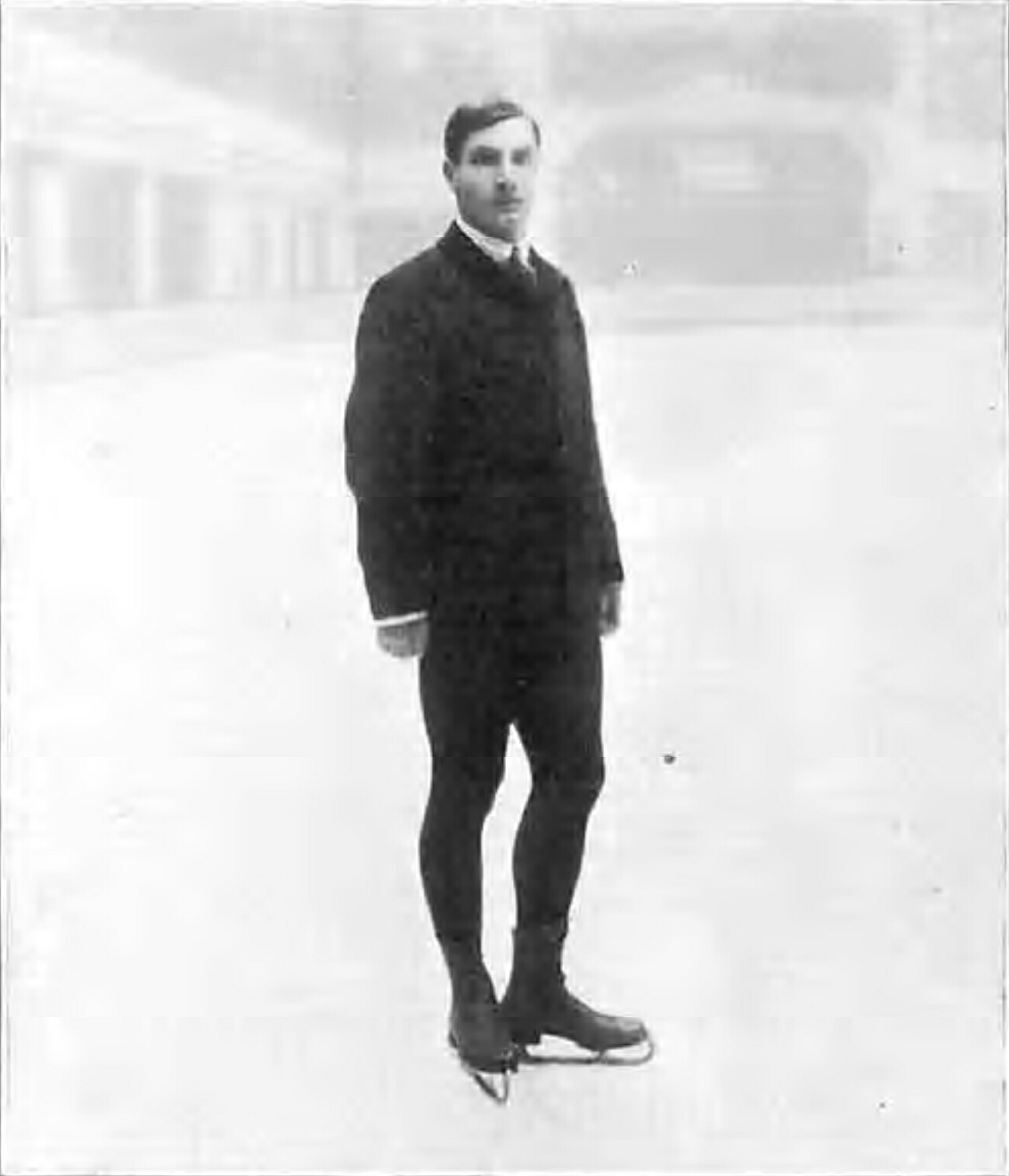1. Early Life and Background
Ulrich Salchow was born on August 7, 1877, in Copenhagen, Denmark. Although born in Denmark, he represented Sweden in all his competitive endeavors. He later married Dr. Anne-Elisabeth Salchow, a dentist, in 1931.
2. Figure Skating Career
Ulrich Salchow's figure skating career was marked by unprecedented success and innovation, establishing him as the dominant figure in the sport during the first decade of the 20th century.
2.1. Dominance and Major Achievements
Salchow achieved remarkable competitive success, setting records that stand to this day. He won the World Figure Skating Championships ten times, with victories spanning from 1901 to 1905 and again from 1907 to 1911. This record for the most World Championship titles in singles figure skating is shared with Sonja Henie (who won ten women's singles titles between 1927 and 1936) and Irina Rodnina (who won ten pairs titles between 1969 and 1978). Additionally, Salchow secured the European Figure Skating Championships title a record nine times (1898-1900, 1904, 1906-1907, 1909-1910, 1913) and earned three silver medals at the World Championships.
In 1906, Salchow notably chose not to compete in the World Championships held in Munich, reportedly due to concerns about receiving fair judgment against his German rival, Gilbert Fuchs. When figure skating made its debut as an Olympic sport at the 1908 Summer Olympics in London, Salchow easily claimed the gold medal in men's singles, becoming one of the oldest figure skating Olympic champions. The men's singles event at these Olympics featured nine participants and five judges. Following the compulsory figures segment, Salchow was in first place, ahead of Nikolai Panin of Russia. However, Panin raised objections regarding the judging, noting that two judges were Swedish (Salchow's nationality) and one Swiss judge was a known acquaintance of Salchow, while the remaining two were Russian and German. Panin subsequently withdrew from the competition. Ultimately, Swedish skaters swept all three medal positions.

2.2. The Salchow Jump
In 1909, Ulrich Salchow pioneered a new figure skating jump in competition, which has since become one of the fundamental elements of the sport. This jump, named the Salchow jump in his honor, involves taking off from the back inside edge of one foot, executing a rotation in the air, and landing on the back outside edge of the other foot. Specifically, he would turn backward, use the momentum generated by swinging his right leg, and take off from the inside edge of his left foot.
2.3. Competition Results
Ulrich Salchow's competitive record is summarized in the table below:
| Event | 1895 | 1896 | 1897 | 1898 | 1899 | 1900 | 1901 | 1902 | 1903 | 1904 | 1905 | 1906 | 1907 | 1908 | 1909 | 1910 | 1911 | 1913 | 1920 |
|---|---|---|---|---|---|---|---|---|---|---|---|---|---|---|---|---|---|---|---|
| Olympics | 1st | 4th | |||||||||||||||||
| World Championships | 2nd | 2nd | 2nd | 1st | 1st | 1st | 1st | 1st | 1st | 1st | 1st | 1st | 1st | ||||||
| European Championships | 1st | 1st | 1st | 3rd | 1st | 1st | 1st | 1st | 1st | 1st | |||||||||
| Swedish Championships | 1st | 1st | 1st |
3. Post-Competitive Career
Following his retirement from competitive skating, Salchow remained deeply involved in the world of sports, transitioning into significant administrative roles.
3.1. International Skating Union (ISU) Presidency
Ulrich Salchow served as the president of the International Skating Union (ISU), the governing body for competitive ice skating, from 1925 to 1937. During his twelve-year tenure, he played a crucial role in the international governance and development of figure skating and other ice sports.
3.2. AIK Sports Club Presidency
Beyond his international administrative duties, Salchow also contributed to Swedish sports at a national level. He held the position of chairman of AIK, a prominent sports club based in Stockholm, between 1928 and 1939. AIK was, and remains, a leading Swedish club with significant presence in various sports, including football, ice hockey, bandy, and tennis.
4. Death and Legacy
Ulrich Salchow's life concluded in Stockholm, leaving behind a profound and lasting legacy in the sport of figure skating.
4.1. Death and Burial
Ulrich Salchow died in Stockholm, Sweden, on April 19, 1949, at the age of 71. He was interred at Norra begravningsplatsen, a large cemetery located north of Stockholm.
4.2. World Figure Skating Hall of Fame
In recognition of his groundbreaking achievements and contributions to figure skating, Ulrich Salchow was posthumously inducted into the World Figure Skating Hall of Fame in 1976. This honor cemented his place among the sport's most influential figures.
5. Impact
Ulrich Salchow's impact on figure skating is multifaceted and enduring. His competitive dominance in the early 20th century set an exceptionally high standard for male singles skaters, with his record of ten World Championship titles remaining unmatched for decades. Beyond his competitive prowess, his most tangible legacy is the Salchow jump, a fundamental and ubiquitous element in modern figure skating programs across all disciplines. This innovation alone revolutionized the technical aspect of the sport. Furthermore, his leadership as president of the International Skating Union and as chairman of AIK demonstrated his commitment to the administrative and developmental aspects of sports, shaping the organizational framework of international and national skating for future generations. His contributions as an athlete, innovator, and administrator collectively ensured his lasting recognition as one of figure skating's true pioneers.